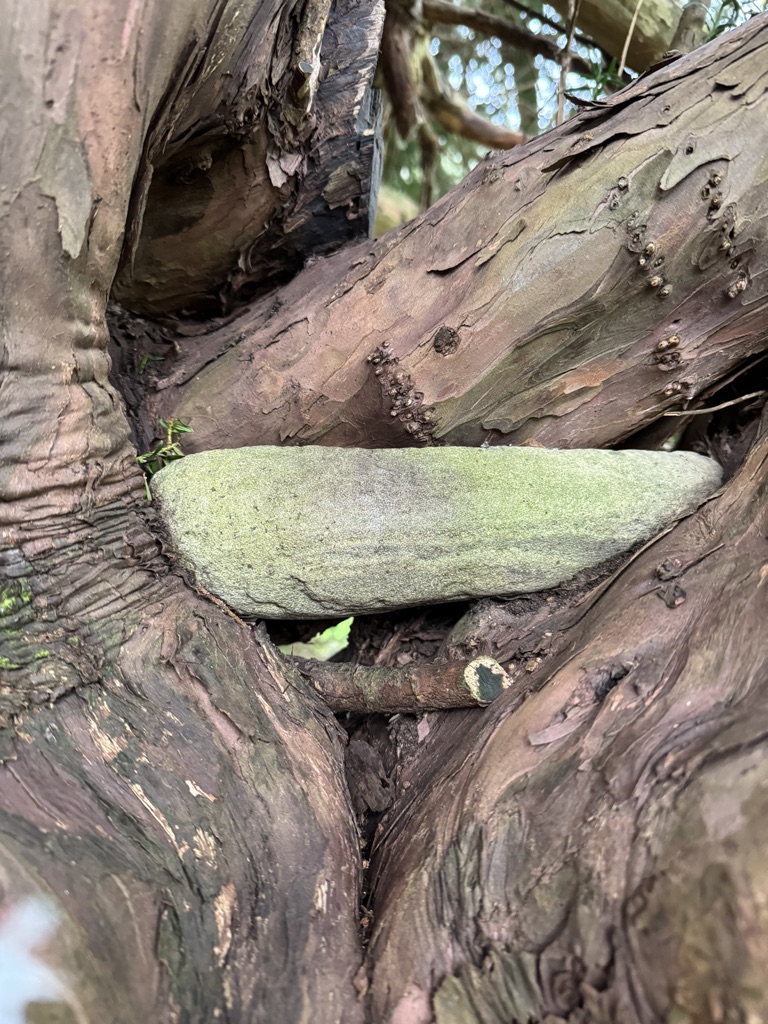No. 1 – St Melangell’s Church, (GC1C1GQ) Tonibunny – 28th May 2007
A favourite Geocache of mine is an ancient religious site in Llangynog, Powys, Wales. It has both history and a peaceful setting. To say that it is remote is an understatement, the church and a very few houses can only be reached down a long track off the B4391 or via a network of footpaths that span the Berwyn Mountains.
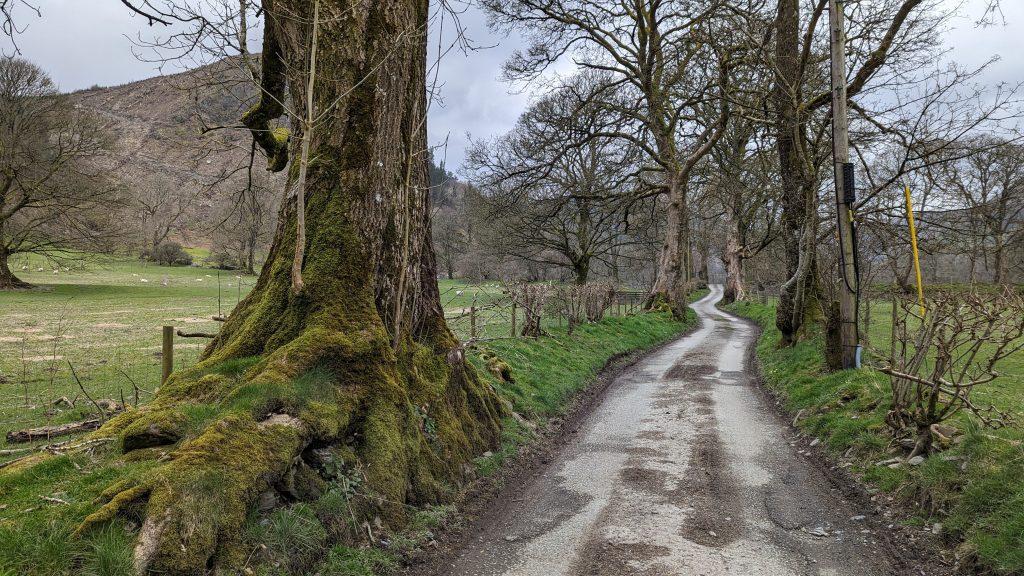
It’s one of those rare places that it has been in constant use thousands of years for worship of various deities from Bronze age to the Christian church which stands there now. As you look around the church yard there are four stately Yew trees that are at least two thousand years old predating the current structure.

There are many gravestones the oldest dating from 1680 right up to the relatively recent burials. The age of the site was revealed when Mid-Bronze age burials were found in the churchyard on an archaeological dig to establish the age, it’s also thought that an older barrow may have existed on the site of the church itself.
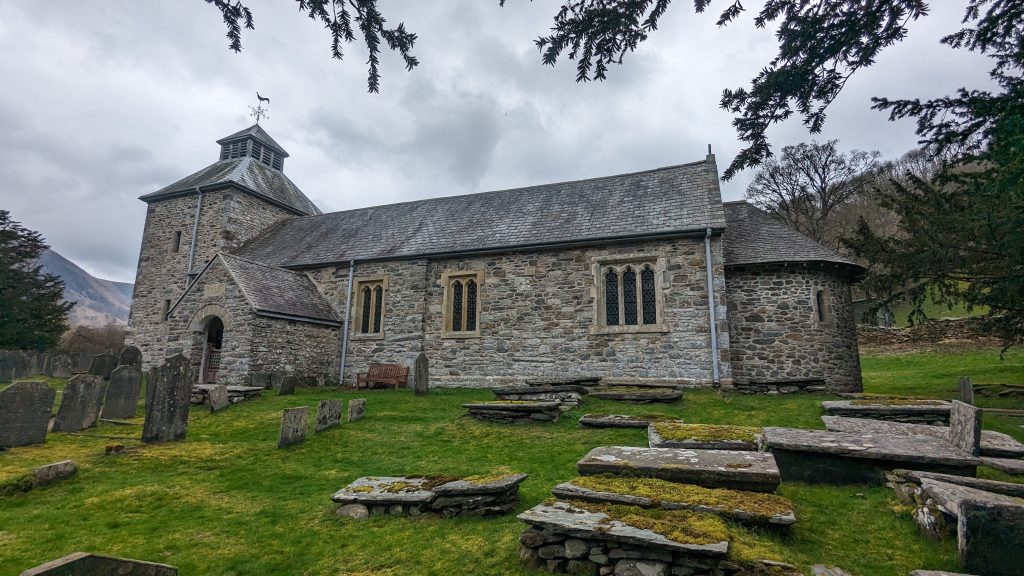
The interior of the church bears witnesses to changing patterns of Christian worship for nearly a thousand years, the origins of Christian worship on the site dates to around the seventh or eighth century when a community of nuns led by St. Melangell (Monacella) after who, the church is named founded a convent. The original convent was a wooden structure and was replaced by a stone building in the late twelfth century to match the needs of the worshipers and the lucrative pilgrim trade, St. Melangell’s shrine (the oldest surviving Romanesque shrine in Northern Europe) offered ‘miraculous cures’ for illness and other spiritual benefits for the pilgrim. That the shrine survives to this day is exceptional.
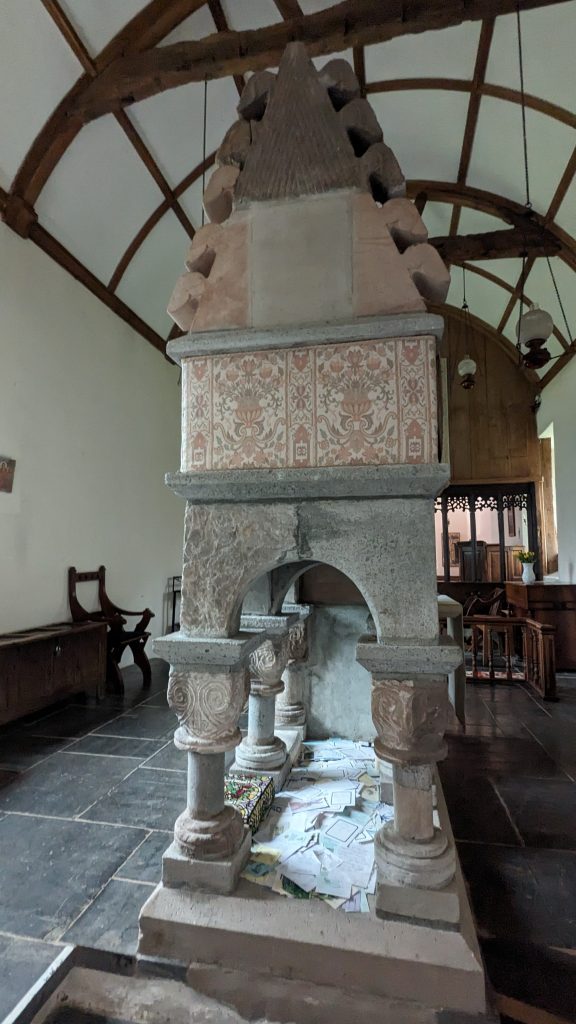
Most British shrines were destroyed either in the Reformation, or when major religious upheavals occurred, sometimes this was as drastic as sweeping away all previous iconography, as in the ‘English’ Civil war where so many churches across Britain were gutted and used as stables, barracks or warehousing. We perceive churches as austere colourless places which in the past was far from the truth, before the reformation in the mid sixteenth century churches were painted with brightly coloured interiors depicting religious scenes for the largely illiterate congregation, traces of these paintings can be seen at various places around the church. In the reformation ‘Superstitious images’ came under attack as Henry the Eighth sought to break with the Pope and Catholic church. Up and down England & Wales, pictures of saints, screens separating clergy and congregation, relics and miracle-working statues were ripped out of parish churches and destroyed, the remoteness of this church and the small insular Welsh speaking community probably saved the shrine from destruction, tragically not the wall paintings though.
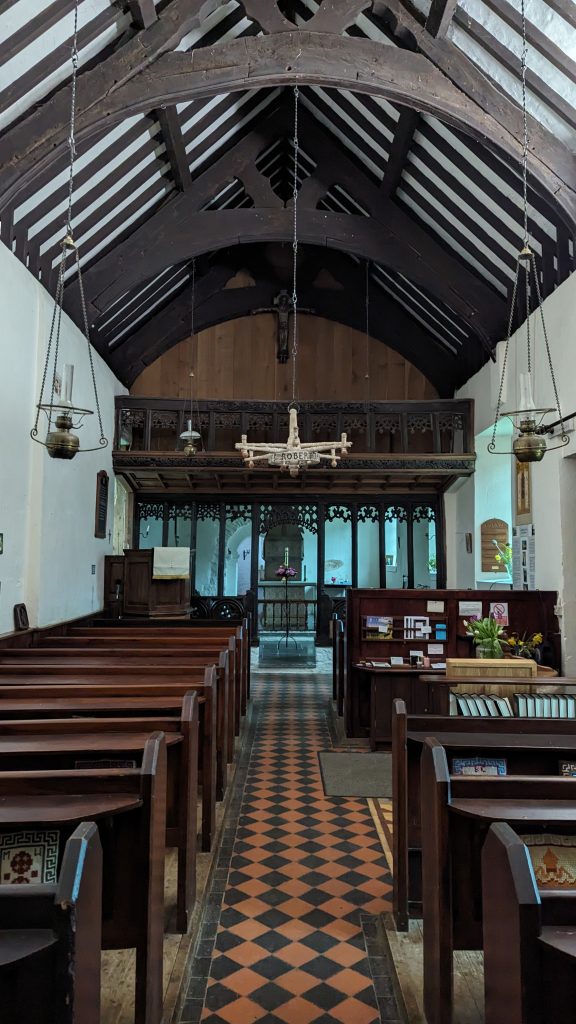
Over the centuries repairs have changed the church but, on the whole the fabric and feel remains the same.
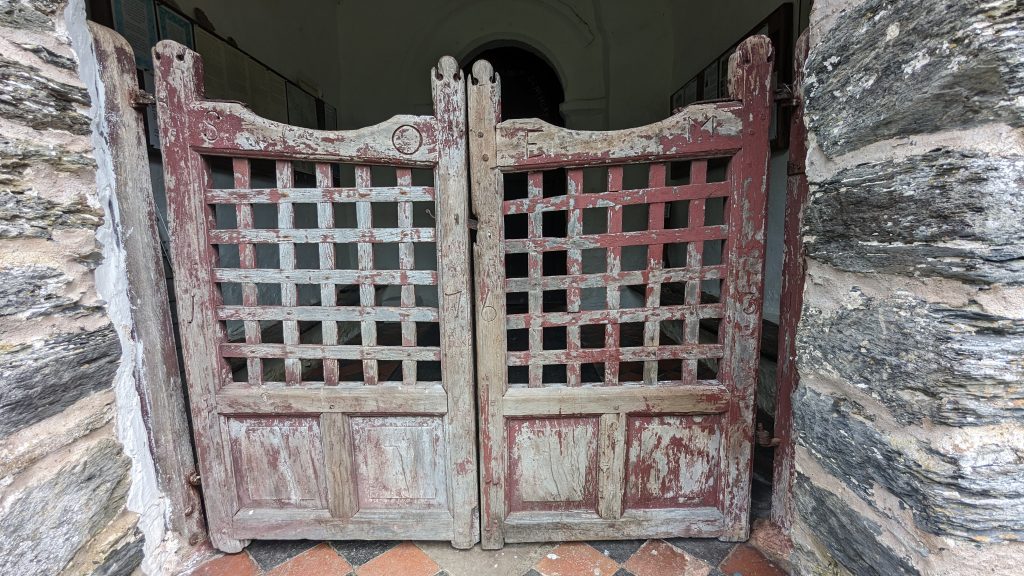
One feature which struck a chord for me was above the cache in the Yew tree someone placed a sharpening stone in the boughs and never returned for it, it is now slowly being absorbed by the yew, which to me symbolises the timelessness of this site.
